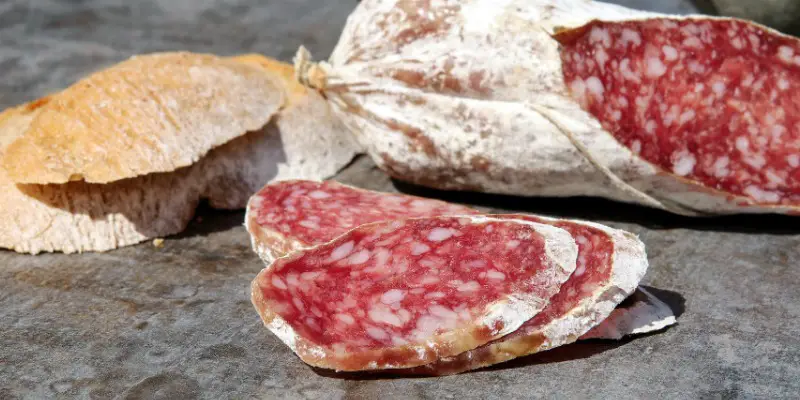
The Difference Between Natural Casing and Artificial Casing. The biggest advantage of using natural casings is that they shrink equally with the meat and thus are great for making dry or semi-dry salami or sausages.
The biggest advantage of using natural casings is that they shrink equally with the meat and thus are great for making dry or semi-dry salami or sausages.
How do they make sausage casing. If you do not have access to natural or artificial casings or just dont want to use them but still want to make sausage links you can make casings from strips of muslin. To form casings about 1 12 inches in diameter cut strips about 6 inches wide and 16 inches long. Place the casings in a bowl and run water over them.
Try to be gentle when you do this so they dont get tangled. Soak the casings in cool water for 30 minutes then rinse with fresh water one more time. Now take each casing one at a time and flush cool water through the inside of the casing to get.
The key to making a sausage casing tender is washing and flushing it. Once you determine how much youll use rinse the casings with water. Doing so will remove excess salt.
Then let the water flush through the casing to clean it thoroughly. Theyre usually cellulose or collagen based but there is a third type made of plastic. Lately there has been some vegetal casings in the making but theyre not very well known.
What kind of casing the sausage has will influence many things like the final flavor how well the meat ferments how well the meat is shaded from the light. Cellulose skin is made by treating cellulose fibers with caustic soda and other chemicals to make a material called viscose. The glue is then converted into whats called a cellulose casing.
Please contact Sausage Casing Manufacturers if you need any help. The Difference Between Natural Casing and Artificial Casing. Casings can be divided into two groups.
It is impossible to match the quality of natural casings. They can be used for almost any product. The biggest advantage of using natural casings is that they shrink equally with the meat and thus are great for making dry or semi-dry salami or sausages.
In a pan if frying sausages in a skin casing a little oil or butter helps to start it. I like to par boil these first letting the water reduce to a drizzle and by then there is fat from the sausage in the water and gently brown the links until done. Preparing Casings for Sausage Making.
Contributed by Dolly Qualls. We always cleaned the intestines for the sausage casings out of the hogs. They were rolled out of the hog into a wash tub with great care so there were no perforations cuts or tears.
Theyre most commonly used for making pepperonis summer sausage bologna liverwurst and other fine smoked sausages. Their durability allows tight stuffing making them ideal for fine or emulsified sausages. Fibrous casings should be soaked for at least 25-30 minutes in warm water 80-100 F.
This machine is the sausage stuffer. We loaded the meat in there and put something that looked kind of like a plunger in the end to get it all pressed in without any air bubbles. There is a crank that steadily presses the sausage meat through the tip.
Sausage casings were soaking in water and I slid them onto the nozzle. Fresh hog sheep and ox casings which are made from the intestines of the animal are cleaned bleached and preserved in salt and these must be soaked in cold water for at least two hours before use preferably overnight. Fresh casings have a shelf life of about two months if kept in salt and kept refrigerated.
If youre interested in sausage-making and dont have access to materials for making your own casings you can buy casings here. Natural sausage casings can be preserved in the refrigerator indefinitely. Simply pack them with a handful of sea salt and cover them with fresh water and top the container with a lid.
Choose casings for your sausages. The most common casings are made from salted pork intestines. They are available at many butcher shops as well as online and they are most commonly sold by the foot.
Fifteen feet 46 m of pork casings. Ive gotten so fed up with it that when we do barbecue competitions I just make skinless chubs par cooked in food wrap and foil to set them to shape which I then treat on the grill or in the smoker as I would cased sausage. But I miss the snap of biting into a good cased sausage.
MartyB cross posted to afb.